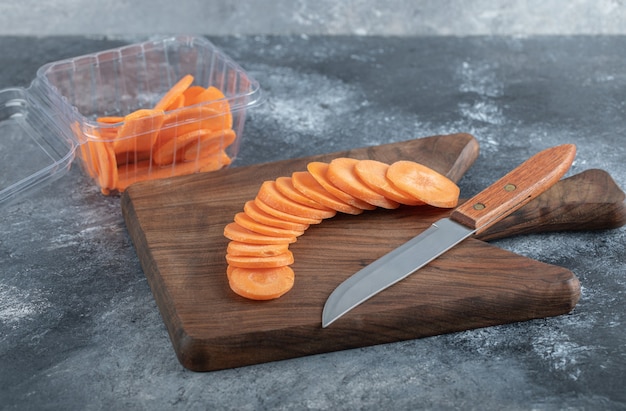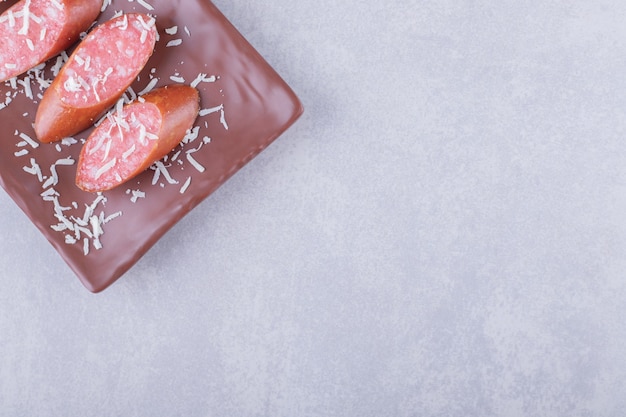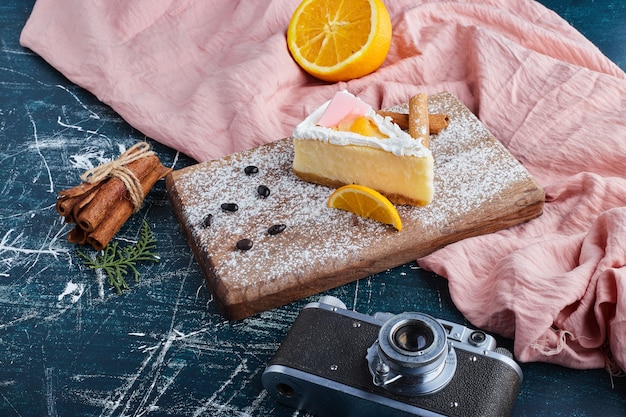frozen salmon is a true kitchen hero. It's always there, ready to be transformed into a delicious meal. But tackling a frozen fish can feel a bit intimidating. Thawing, cooking, and then figuring out all the seasonings and sides can be overwhelming. But fear not, my fellow food lovers! I'm here to guide you through it, sharing my own kitchen experiences (and a few funny stories along the way). This guide will be your go-to for whipping up perfectly cooked frozen salmon, every time. Grab your spatula, and let's get cooking!
Part 1: The Frozen Salmon Saga

1.1 The Art of Thawing
First things first: thawing. You can't just toss a brick of frozen fish into a pan, can you? Luckily, there are a few ways to bring your salmon back to life.
- The Fridge Method: This is the classic, "slow and steady wins the race" method. Just pop your frozen salmon into the fridge the night before. This allows it to thaw evenly and slowly, which is the key to maintaining its texture and flavor. If you forget about it? No worries, it'll just take a bit longer.
- The Cold water bath: This method is for those who need a quicker solution. Submerge your frozen salmon (sealed in a bag, of course!) in a bowl of cold water. It's important to change the water every 30 minutes or so to keep it cold. This helps prevent the salmon from sitting in warm water, which can lead to uneven thawing or even bacteria growth. Depending on the size of your salmon, this method can thaw it in a couple of hours.
- The Microwave Method: Now, this one requires a bit more finesse. Microwaving is definitely the fastest way to thaw salmon, but it can be tricky. You'll want to use the defrost setting and watch it closely. Avoid blasting it with high heat, as that could end up cooking it unevenly, leaving you with a half-cooked mess. I've been there, trust me!
1.2 The Pre-Cook Prep: Setting the Stage
Once your salmon is thawed, it's time to get prepped. This step is super important, especially for thinner fillets. It helps ensure that you end up with perfectly cooked, not overcooked, salmon.
- Pat it Dry: Grab some paper towels and pat that salmon dry. This step might seem insignificant, but it's actually crucial. A dry surface helps prevent sticking to the pan, leading to a nice, crispy skin. It also ensures the salmon cooks more evenly.
- Seasoning is King: This is your chance to get creative! While salt and pepper are the basic staples, don't be afraid to experiment. Paprika, garlic powder, lemon zest, herbs – the possibilities are endless. Remember, it's your salmon, so make it your own!
- The Skin Game: If you're keeping the skin on (which is a great way to keep the salmon moist and flavorful), score it diagonally across the surface. This helps the skin cook more evenly and prevents it from curling up, making for a more aesthetically pleasing dish.
Part 2: Cooking Your Frozen Salmon: A culinary adventure

Now that your salmon is prepped, it's time to choose your cooking method. Each technique offers a unique flavor and texture, so choose the one that best suits your taste buds and preferences.
2.1 The Pan-Seared salmon: A Classic
Pan-searing is a classic for a reason. It's quick, simple, and results in beautifully browned and flaky salmon. The secret lies in achieving a crispy skin and a moist, succulent interior.
2.1.1 The Searing Secret: A Hot Pan is Key
Heat a skillet over medium-high heat and add a touch of oil. You want that pan sizzling hot to create the perfect sear without burning the fish. Remember, you're not just cooking the salmon; you're creating a delicious crust.
2.1.2 The Flip Flop: Timing is Everything
Once your pan is hot, gently place the salmon skin side down. You should hear a satisfying sizzle. Leave it undisturbed for about 3-4 minutes. Resist the urge to peek! You'll know it's ready to flip when the edges turn white and the bottom has a nice, golden brown crust. Then, carefully flip it over and cook for another 2-3 minutes. The internal temperature should reach 145°F (63°C) for safe consumption.
2.1.3 The Rest Time: Patience is a Virtue
Don't rush to slice and serve immediately. Let that salmon rest for a few minutes before digging in. This allows the juices to redistribute, ensuring a moist and tender bite.
2.2 The Oven-baked salmon: A Hands-Off Delight
For those who prefer a more relaxed approach, oven-baking is the way to go. It's a simple and reliable method that yields consistently delicious results.
2.2.1 The Baking Sheet: Setting the Stage
Preheat your oven to 400°F (200°C). Line a baking sheet with parchment paper or foil. This prevents sticking and makes for a stress-free cleanup.
2.2.2 The Baking Time: A Matter of Patience
Place your seasoned salmon on the baking sheet and bake for about 12-15 minutes, depending on the thickness. You'll know it's done when the flesh is opaque and flakes easily with a fork. And, of course, the internal temperature should reach 145°F (63°C).
2.2.3 The Glaze: Adding a Touch of Magic
Want to elevate your oven-baked salmon? Try adding a glaze. Honey, maple syrup, or even a simple lemon-butter sauce can add a touch of sweetness and tang. Brush the glaze over the salmon during the last 5 minutes of baking for a mouthwatering finish.
2.3 The air fryer salmon: Crispy and Convenient
The air fryer has become a modern kitchen staple, and it's amazing for cooking salmon. It's quick, it delivers a deliciously crispy texture, and it requires minimal effort.
2.3.1 The Air Fryer Prep: Setting the Stage
Preheat your air fryer to 400°F (200°C). Line the basket with parchment paper to prevent sticking and make cleanup easier.
2.3.2 The Air Fry Time: A Quick and Easy Cook
Place the salmon skin-side down in the air fryer basket and air fry for 8-10 minutes. It's done when it's flaky and cooked through, with a lovely crispy skin.
2.4 The Grill It Out: Smoky and Flavorful
For those who crave that smoky, barbecue flavor, grilling is an excellent option. Just remember to follow a few safety tips to ensure a successful grilling experience.
2.4.1 The Pre-Heat: A Hot Grill is Crucial
Preheat your grill to medium heat. You want those beautiful grill marks, so make sure the heat is even across the grill grates.
2.4.2 The Salmon Spot: Finding the Perfect Spot
Place your salmon on the grill, skin side down. If you have a gas grill, you can close the lid. If you're using a charcoal grill, keep the lid open.
2.4.3 The Flipping Point: Don't Overdo It
After about 4-5 minutes, carefully flip the salmon over. Continue cooking for another 2-3 minutes until it's cooked through. You'll know it's done when the flesh is opaque and flakes easily with a fork.
Part 3: Beyond the Basics: Exploring Different Flavours

Now, let's spice things up! Salmon pairs beautifully with a wide array of flavors, so don't be afraid to get creative. Here are a few recipe ideas to inspire your culinary journey.
3.1 The Mediterranean Delight: A Taste of Greece
Salmon and Mediterranean flavors? A match made in culinary heaven! This simple recipe will transport you to the sun-kissed shores of Greece.
3.1.1 The Ingredients: A Simple But Flavorful Blend
- 1 pound frozen salmon fillet
- 2 tablespoons olive oil
- 1 lemon, juiced
- 2 cloves garlic, minced
- 1/2 teaspoon dried oregano
- Salt and pepper to taste
- 1/4 cup chopped fresh parsley
3.1.2 The Method: Easy as Can Be
1. Preheat your oven to 400°F (200°C) and line a baking sheet with parchment paper.2. In a small bowl, combine olive oil, lemon juice, garlic, oregano, salt, and pepper. 3. Rub the marinade all over the salmon fillet.4. Place the salmon on the baking sheet and bake for 12-15 minutes, or until cooked through. 5. Garnish with fresh parsley and serve.
3.2 The Asian Inspiration: A Flavor Explosion
Bring the vibrant flavors of Asia to your dinner table with this ginger and soy sauce-infused recipe. It's a delicious fusion of sweet, savory, and spicy.
3.2.1 The Ingredients: A Blend of Asian Delights
- 1 pound frozen salmon fillet
- 2 tablespoons soy sauce
- 1 tablespoon honey
- 1 tablespoon rice vinegar
- 1 tablespoon grated fresh ginger
- 1 clove garlic, minced
- 1 teaspoon sesame oil
- 1/4 cup chopped green onions
3.2.2 The Method: Simple and Satisfying
1. In a small bowl, combine soy sauce, honey, rice vinegar, ginger, garlic, and sesame oil. 2. Marinate the salmon in the sauce for at least 30 minutes. 3. Preheat your oven to 400°F (200°C) and line a baking sheet with parchment paper.4. Place the marinated salmon on the baking sheet and bake for 12-15 minutes, or until cooked through. 5. Garnish with green onions and serve with rice or noodles.
3.3 The Spicy Kick: A Taste of Heat
If you like things with a little fire, this recipe will set your tastebuds on fire. We'll be using sriracha for a bold, spicy kick.
3.3.1 The Ingredients: Spicy and Flavorful
- 1 pound frozen salmon fillet
- 2 tablespoons sriracha sauce
- 1 tablespoon soy sauce
- 1 tablespoon honey
- 1 tablespoon lime juice
- 1 teaspoon grated fresh ginger
- 1/2 teaspoon sesame oil
- 1/4 cup chopped cilantro
3.3.2 The Method: A Quick and Easy Spicy Dish
1. In a small bowl, combine sriracha sauce, soy sauce, honey, lime juice, ginger, and sesame oil.2. Marinate the salmon in the sauce for at least 30 minutes. 3. Preheat your oven to 400°F (200°C) and line a baking sheet with parchment paper.4. Place the marinated salmon on the baking sheet and bake for 12-15 minutes, or until cooked through. 5. Garnish with cilantro and serve with rice or a side salad.
Part 4: Serving Up the Salmon Sensation
Now that your salmon is cooked to perfection, let's talk about serving it. It's the finishing touch that elevates your dish from good to great.
4.1 The Sidekicks: Complementary Companions
Choose sides that complement the flavor profile of your salmon. Here are a few ideas:
4.1.1 The Classic Combo: Simple and Satisfying
A simple side of roasted vegetables or a green salad is always a great choice. They provide a refreshing contrast to the rich salmon.
4.1.2 The Asian Fusion: A Taste of the Orient
If you're going for Asian flavors, try serving your salmon with stir-fried vegetables, rice, or noodles.
4.1.3 The Mediterranean Magic: A Taste of the Sun
For a Mediterranean touch, serve your salmon with a side of couscous, roasted vegetables, or a Greek salad.
4.2 The Sauce Power: Adding a Touch of Magic
Adding a sauce to your salmon can enhance its flavors and add a touch of sophistication. Here are some options:
4.2.1 The Creamy Dream: Classic and Comforting
A creamy lemon-butter sauce is a classic choice for salmon. Simply melt butter in a pan, add lemon juice, and whisk until smooth.
4.2.2 The Spicy Kick: A Touch of Heat
For a spicy twist, add a dollop of sriracha or chipotle sauce to your salmon.
4.2.3 The Herb Garden: Fresh and Flavorful
A simple herb sauce made with fresh herbs like dill, parsley, or chives is another delicious option.
4.3 The Presentation: A Feast for the Eyes
Don't underestimate the power of presentation. A beautifully plated dish can make your salmon even more appealing.
4.3.1 The Artistic Touch: Simple and Elegant
Use a simple white plate and arrange your salmon with your chosen side and sauce. You can add a sprig of parsley or a slice of lemon for a touch of colour.
4.3.2 The Rustic Charm: Warm and Inviting
For a rustic look, serve your salmon on a wooden cutting board or platter.
Part 5: The salmon storage Secrets: Keeping it Fresh
Now, let's talk about storing your salmon. You want to keep it fresh and delicious, right?
5.1 The Fridge Time: Short-Term Storage
If you have leftover salmon, store it in the fridge for up to 3-4 days. Make sure to wrap it tightly in plastic wrap or aluminum foil to prevent freezer burn, which can dry out the fish and affect its flavor.
5.2 The Freezer Zone: Long-Term Storage
You can also freeze cooked salmon for up to 2-3 months. Wrap it tightly in plastic wrap and then place it in a freezer-safe bag. Be sure to label it with the date.
5.3 The Reheating Ritual: Bringing it Back to Life
When you're ready to reheat your salmon, you can do it in the oven, microwave, or even on the stovetop. Just make sure to heat it through until it's steaming hot.
Part 6: The salmon faqs: Common Questions Answered
Here are some frequently asked questions about frozen salmon:
6.1 Can I Cook Frozen Salmon Without Thawing It?
Technically yes, but it's not recommended. Thawing first ensures even cooking and prevents the salmon from ending up rubbery or undercooked. If you cook it frozen, you'll need to significantly increase the cooking time and may need to use a higher temperature. You can always use a meat thermometer to ensure it reaches the proper internal temperature (145°F/63°C).
6.2 How Can I Tell If My Salmon is Cooked Through?
The best way to tell if your salmon is cooked through is to use a meat thermometer. It should reach an internal temperature of 145°F (63°C). The flesh should also be opaque and flake easily with a fork.
6.3 What Should I Do If My Salmon is Overcooked?
overcooked salmon can be dry and tough. If this happens, there's not much you can do to fix it, but you can still salvage it by making it into a salad or pasta dish.
6.4 How Long Can I Keep Frozen Salmon?
Frozen salmon can last for up to 6 months in the freezer. After that, it may start to lose its flavour and texture.
6.5 Can I Cook Frozen Salmon in the Air Fryer?
Yes, you can cook frozen salmon in the air fryer. You'll need to increase the cooking time, but it's a great way to get crispy, flavorful salmon. Just make sure to check the salmon regularly to ensure it doesn't burn.
Part 7: The Salmon Mishaps and Triumphs: Lessons Learned
I've had my share of salmon mishaps. There was that time I left the salmon thawing in the sink and forgot about it until it started to smell... not good! And then there was the time I tried to cook it frozen in the air fryer and ended up with a dry mess. These are part of the culinary journey, right?
But, I've also had some amazing triumphs. I once made this incredible salmon with a honey-ginger glaze that had everyone raving. It was so delicious, it made me feel like a true chef! And don't get me started on the air fryer salmon with lemon and dill – it's a revelation!
So, don't be afraid to experiment. Try different flavors, different cooking methods, and most importantly, have fun! You never know what culinary delights you might discover. Just remember, even the most seasoned chefs have their mishaps. It's all part of the process, and it's what makes cooking so rewarding.
Part 8: Salmon: A Culinary Star
From its delicate flavor to its versatility, salmon is truly a culinary star. It's a great source of protein, omega-3 fatty acids, and other essential nutrients. It's also incredibly adaptable, so you can cook it in countless ways. I'm confident that you'll be making delicious salmon dishes for years to come.
So, go forth, my fellow food enthusiasts, and embrace the world of frozen salmon. It's waiting to be explored, and I know you'll create some amazing meals along the way. And if you ever need any advice, just remember, I'm always here to help.
Everyone is watching

Corn on the Cob: The Ultimate Guide to Perfectly Cooked Ears
Healthy MealsAh, corn on the cob. Just the name evokes images of sunny days, barbecues, and that sweet, juicy flavour that ...

Scallops: The Ultimate Guide to Perfect Cooking
Healthy MealsAh, scallops. Those delicate, sweet, and utterly delicious morsels of the sea. They hold a special place in my...

Spaghetti Squash: The Ultimate Guide to Cooking and Serving
Healthy MealsRemember that time you saw spaghetti squash at the supermarket, looking all bumpy and strange, and thought, "W...

Salmon Cooking Times: Perfect Guide for Every Recipe
Healthy MealsLet me tell you, cooking salmon is an art form. It's all about getting that perfect balance: juicy and tender,...

Ham Cooking Time: How Long to Bake, Smoke, or Boil a Delicious Ham
Healthy MealsAh, ham. It's a classic, isn't it? A real crowd-pleaser, especially around holidays. And when done right, it'...
